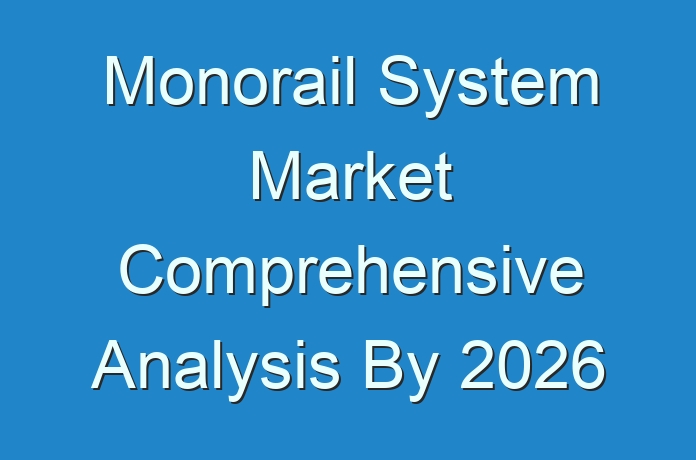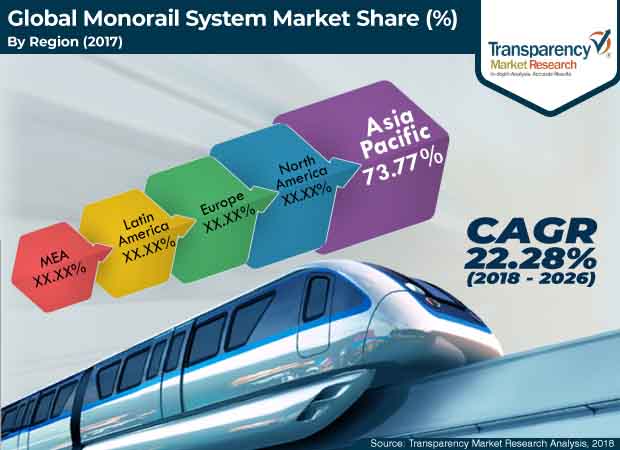
Transparency Market Research has released a new market report titled “Monorail System Market – Global Industry Analysis, Size, Share, Growth, Trends, and Forecast, 2018–2026.” According to the report, in terms of revenue, the global monorail system market is predicted to expand at a CAGR of about 22% during the forecast period.
Trains are cost-effective and considerably less polluting mode of transportation and hence, governing bodies are preferring to expand train connectivity in order to enhance train transportation. Internal combustion engine vehicles are a major source of pollution. Therefore, governing bodies are focused on increasing the adoption of other modes of transportation that are less polluting, such as trains. Monorails are a significantly less polluting and faster mode of transportation.
Monorails require significantly lesser space than that of conventional trains, and hence, these are more suitable for urban areas where lack of space is a concern. Rapid urbanization occurring due to enhanced job opportunities, increase in number of on-road vehicles due to rise in per capita income, and enlarging urban areas are fueling the demand for faster, safer, and economical modes of transportation, which in turn is fueling the demand for monorail systems. Moreover, the construction of monorail systems is much easier and requires significantly lower expenditure. Consequently, governing bodies, especially across developing nations, are preferring to incorporate the monorail system in densely populated urban areas.

Request A Sample – https://www.transparencymarketresearch.com/sample/sample.php?flag=S&rep_id=27410
In terms of type, the monorails systems market has been bifurcated into straddle monorail and suspended monorail. Suspended monorails were popular Germany and were installed in zoos, theme parks, and exhibitions. Suspended monorails are suitable for light applications, as their passenger carrying capacity is much lower than that of straddle type monorails. The cost of construction of suspended type monorail is higher than that of straddle type monorail system. Therefore, straddle type monorail systems are preferred for mass and high frequency transportation, such as urban transportation. Major number of proposed and under-construction monorail system projects are incorporating the straddle type monorail system. Consequently, the straddle monorail segment is likely to expand at a CAGR of about 23% during the forecast period.
Maglev trains are capable of achieving cruising speed of more than 500 Km per hour, which makes these trains suitable for long-distance travel. Maglev monorails utilize magnetic levitation to propel the vehicle. These monorails utilize two sets of magnets, one to lift the train and the other to propel the vehicle forward. Maglev trains are considerably fast; however, the cost and time required for construction of maglev monorail system is significantly higher than that of electric monorail system. Electric monorail systems are suitable for transporting passengers for shorter distances. The electric monorail system can have numerous stations across its track, which makes is highly suitable for urban areas. Therefore, the electric monorail system segment dominates the global monorail system market.
Incorporation of automation into trains can save up to 15% of the energy required and can have a significant positive impact on required travel time. Automated trains are proven to have reduced number of crashes and accidents and hence, preference for automated trains has been increasing over the last few years. Completely autonomous vehicles, which are considered as GoA3 and GoA4 trains, don’t have a driver and are more expensive than semi-autonomous trains. GoA1 and GoA2 trains are semi-autonomous trains that have automated train operation and automated train protection technology.





